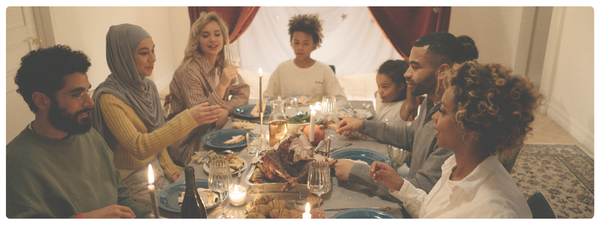To find success and happiness, kids don’t just need to learn how to read, write, and add. They need to learn how to ask thoughtful questions, manage big emotions, work through frustration, and care for those around them (and themselves).
These life skills are not often taught in school settings.
While most schools prioritize academics, it’s these everyday abilities that actually shape how children move through the world.
And in today’s digital age, those skills aren’t just learned on the playground or around the dinner table. They can be practiced in digital games, co-op puzzles, online worlds, and everyday screen time. If we’re helping our kids be intentional about how they use them, that is.
Life skills fall into three categories — cognitive, social-emotional, and practical — which I’ll explain below. They’re important for development throughout early childhood and for bringing kids up through the next stages of their lives.
What Are Life Skills, Really?
Life skills are the tools kids use to navigate everyday life with confidence, curiosity, and care. These aren’t just job prep or “adulting” checklists. They’re the building blocks of thinking critically, regulating emotions, setting goals, communicating, and making thoughtful decisions.
Life skills underline nearly every part of our lives. They’re like the vitamins and minerals in our diets — they’re essential, not just there for flavor! Life skills influence how children:
- Handle frustration or conflict
- Make choices and solve problems
- Connect with others
- Adapt to new situations
- Feel capable in a rapidly changing world
They’re also deeply teachable, especially in early childhood, when kids are learning how to be themselves in relation to others. The good news? You’re already teaching them, even if you don’t realize it. But there are plenty more ways to lean into these life skills, including through intentional screen time and digital play.
Why Teach Life Skills Early?
According to the World Health Organization, life skills education supports mental health, improves academic outcomes, and reduces risky behaviors in adolescence.
Academic skills are important, but they’re not the only thing kids need to thrive. In fact, many of life’s challenges aren’t solved with classroom knowledge, but with emotional and interpersonal skills. Even in those situations when academics are crucial, life skills help bring those concepts to life in meaningful, impactful ways.
It’s important to teach life skills early because they are:
- Learned early and reinforced over time
- Directly tied to long-term mental health and resilience
- Critical for navigating both offline and digital spaces
And they can often be a missing layer in modern childhood. That’s led to what we call the Life Preparedness Gap: a disconnect between what kids are learning and what they actually need to feel confident and capable in today’s world.
Kids who develop strong life skills early tend to:
- Show greater resilience and emotional stability
- Form healthier relationships
- Manage stress more effectively
- Learn and grow from setbacks
Teaching life skills early helps close that gap. It gives kids a foundation that supports all other learning, be it academic, emotional, or social.
The Three Core Categories of Life Skills
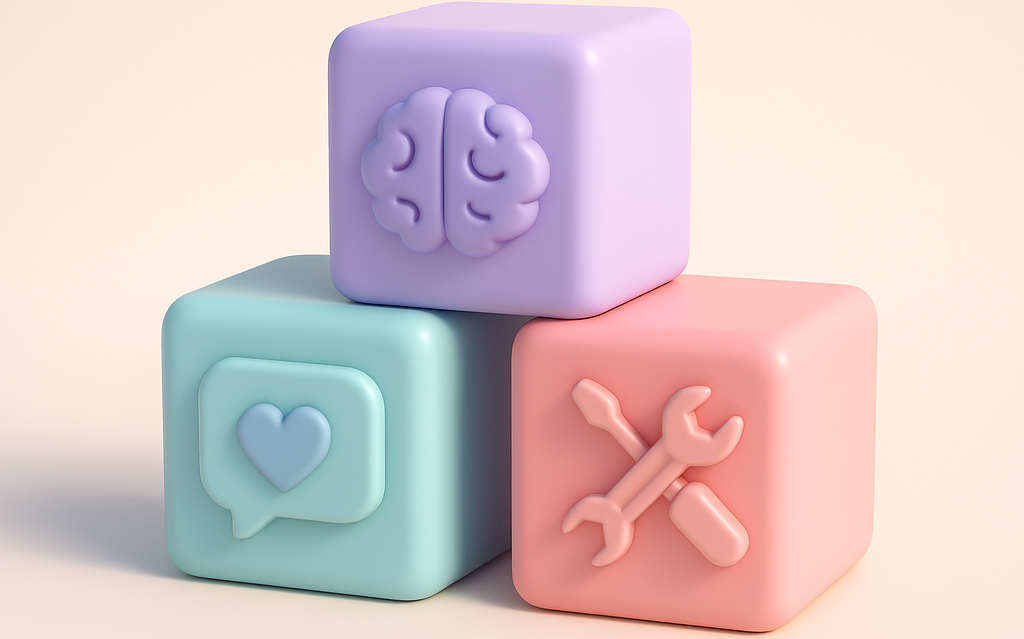
We’ll talk about life skills in three categories:
- Cognitive: thinking and reasoning that supports curiosity
- Social-emotional: relating and feeling to support compassion
- Practical: doing and caring to become capable
Developing and balancing all three categories helps kids develop into well-rounded, confident humans. As I discuss them in more detail below, I will mix in examples that speak to modern, digital methods of development like video games for kids and intentional screen time.
Later, I’ll explain why this matters in the broader scheme of developing smart, capable kids who leverage screens as a tool, not a treat or a threat.
Cognitive Skills Empower Curiosity
Cognitive life skills enable children to make informed decisions, solve problems, and think critically. They emerge through play, exploration, and trial and error, especially the kind of open-ended play that encourages kids to tinker, question, and imagine.
Open-ended play is something we definitely value in early childhood, but it tends to fade away relatively quickly. For instance, my son in kindergarten still gets it, but by grade one, it really starts to fade — even though it’s essential throughout the lifespan.
Critical Thinking
Critical thinking is the ability to analyze information, weigh options, and choose the best course of action. Whether a child is choosing the best way to build a LEGO tower or deciding how to protect their Minecraft house from nighttime zombies, they’re practicing critical thinking.
They’re asking:
- What do I have?
- What do I need?
- What works best?
These are skills that matter far beyond the playroom and the screen.
Growth Mindset
A growth mindset is the belief that skills and abilities can improve with effort and persistence. In most games, persistence is the only path forward. You try, fail, try again — and that loop practices resilience to build a growth mindset. Kids learn that effort matters, mistakes are okay, and they’re capable of improvement.
Creativity
Creativity is the ability to generate original ideas and approach challenges in new and flexible ways. Digital tools can unlock creativity in powerful ways. Whether it’s designing a new character, building a custom island, or using digital painting tools instead of messy markers, games let kids experiment with fewer barriers.
Creativity doesn’t always mean glue and glitter — sometimes it means a game controller and an idea. There’s not always the time or bandwidth to set up a painting station, but there are digital tools that allow them to express those same creative muscles — easier, more accessible, and with less cleanup.
Does anyone else remember Mario Paint!? Kids today have even more options.
Social-Emotional Skills for Compassionate Kids
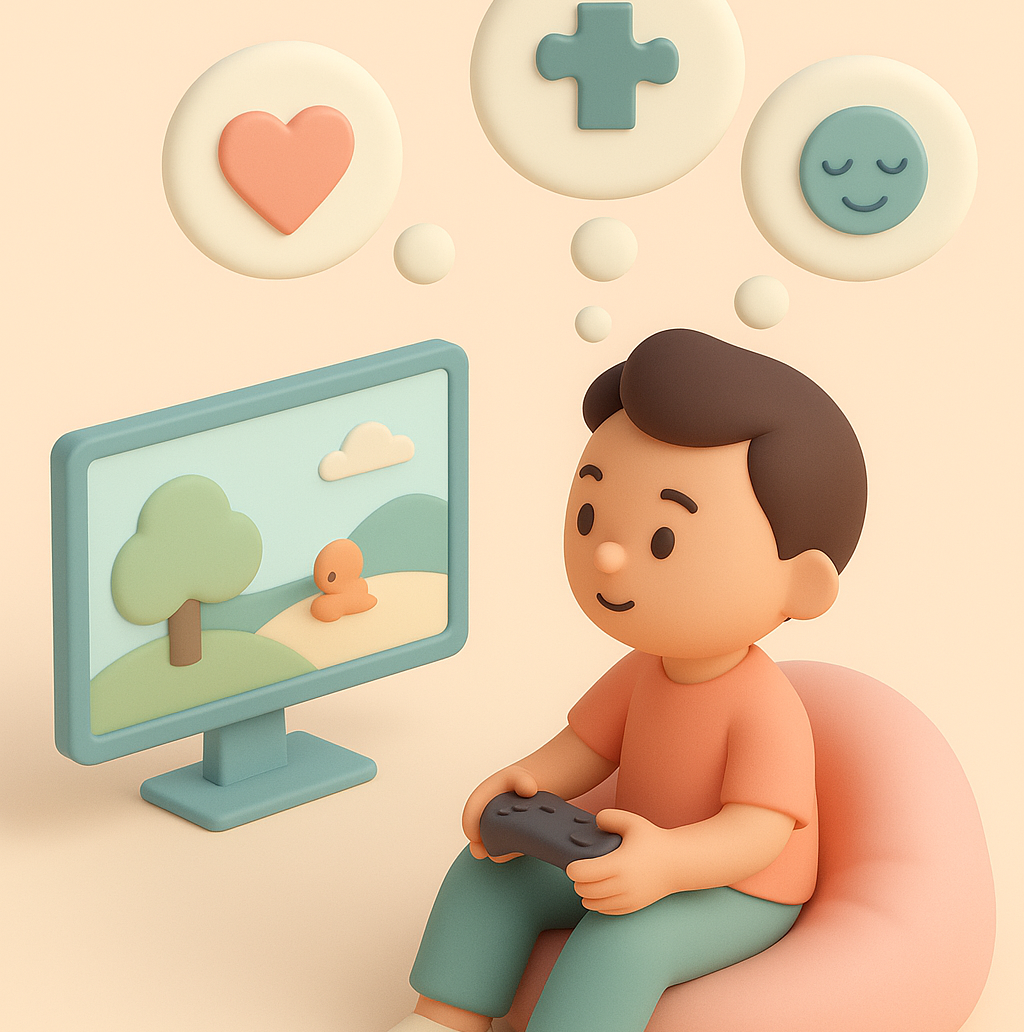
Social-emotional skills help kids understand feelings — their own and others’ — and navigate relationships with care and confidence. They’re also crucial for co-play, teamwork, and community.
Empathy
Empathy is the ability to recognize and understand how someone else is feeling, and to respond with care.
Many games help kids understand how others feel — especially those that include different characters, perspectives, or choices.
Even losing a match can spark empathy:
- How does my friend feel when they lose?
- How do I help them feel better?
Research has actually shown that representing mental health in video games helps reduce its stigma overall. Players build compassion and understanding by seeing these elements represented through interactive on-screen experiences.
Communication
Communication (and active listening) is about clearly expressing thoughts, listening actively, and sharing ideas with others.
Collaborative games (like Death Squared, a family-friendly puzzle game) require kids to talk through problems under pressure. That’s a skill that’s rarely taught in school, but it shows up in adult life all the time.
Collaboration
Collaboration means working with others toward a shared goal — with patience, flexibility, and mutual respect. It usually takes a lot of communication, a perfect example of how all these life skills start to support one another.
Whether they’re building something together in a sandbox game or taking turns in a board game, kids practice working toward a shared goal, managing emotions, expectations, and fairness along the way.
Emotional Regulation
For young kids, emotional regulation leans heavily into frustration tolerance. Emotional regulation is the ability to manage strong feelings in a healthy, constructive way.
Games often create emotional highs and lows — frustration, excitement, surprise, disappointment. Learning to pause, take a breath, and try again helps kids manage those emotions in other parts of life, too.
Social Awareness
Social awareness is the ability to understand group dynamics, recognize fairness, and act with kindness in social situations.
Playing with siblings or friends helps kids notice inclusion, fairness, and group dynamics. A simple moment — like realizing a younger sibling feels left out — becomes a chance to exercise that social awareness and kindness.
Practical Life Skills for Capable Kids (and Adults)
These are the everyday skills that support independence and confidence. While they encompass basics such as hygiene and chores, they also extend to digital wellbeing and responsible resource management.
Digital Wellbeing
Digital wellbeing is about using technology in healthy, intentional ways that support your physical, emotional, and mental health. Understanding how screens can affect your body and mind is a life skill.
That includes:
- Knowing which games help you calm down (and which don’t)
- Understanding when to pause
- Learning to use tech as a tool — not a treat or a threat
As one example, in some families, games aren’t allowed before school. Not because they’re bad, but because they’re hard to transition away from. Yet in other families, a quick session before breakfast or on the way to school is a reliable way to settle down and lock in for the day.
That’s digital well-being fine-tuned to the individual child. We are also likely to tune our approaches to our family, to the environment (our house or grandma's house), and across ages.
Healthy Habits
Healthy habits include routines that support physical and emotional wellbeing, like sleep, movement, hygiene, and screen balance.
Games and routines can reinforce sleep, hydration, hygiene, and emotional check-ins when they’re scaffolded by a caregiver.
Financial Literacy
Financial literacy is the ability to understand and manage money and resources in thoughtful, age-appropriate ways. It helps kids understand:
- Why can’t we buy them every toy they want?
- Why do parents go to work?
- Why do some families have “more” than others?
- How do our finances reflect our personal values?
Even simple in-game economies (like earning coins or trading items) introduce concepts like saving, spending, and delayed gratification. In Animal Crossing, if you leave your house neglected, cockroaches move in. Subtle, yes — but it’s teaching care and responsibility. Nurture also introduced an adventure, Fluffle Factory, that helps kids learn how to spend, save, and share their Fluffle coins to progress through the level successfully.
Community Care
Community care is about contributing to the well-being of others and acting with kindness and responsibility in shared spaces. In our modern era, that also extends to digital citizenship.
Games often reinforce kindness, responsibility, and group contribution. Whether it’s helping clean up a virtual space or noticing the needs of a digital neighbor, these moments echo lifelong values.
Environmental Stewardship
Environmental stewardship means understanding how our actions affect the natural world and taking steps to protect it. One way to do so is by balancing “screen time” and “green time” — learn more about that in our Summer Screen Time Guide.
Many games reflect environmental cause-and-effect relationships. In SimCity, for example, building too many factories creates pollution. That helps kids understand environmental tradeoffs and consequences. Other games incorporate animal care, another way to connect digital play with caring for the natural world around us.
Life Skills in the Digital Age: Growth Through Play
Much more than just entertainment, digital games are powerful tools for learning and development. While, yes, it’s great to learn that playing video games can boost kids’ IQ scores, those couple of ticks in Intelligence Quotient are nothing compared to the leg-up kids get with well-honed life skills.
When used intentionally, games can:
- Build cognitive skills like decision-making, reasoning, and problem-solving
- Strengthen social-emotional skills like empathy, communication, and frustration tolerance
- Reinforce practical habits like planning, budgeting, and tech self-awareness
One of the most powerful, but often overlooked, ways to maximize these benefits? Co-play.
When parents play games alongside their kids, it opens up conversations about choices, emotions, values, and strategies. That kind of shared experience deepens learning and connection.
The misconception is that learning only happens when games look “educational” — like flashcards on a screen. But the truth is, nearly all games involve learning. It’s just that much of it looks like creativity, curiosity, and challenge, not spelling or math drills.
Games aren’t frivolous. They’re not just teaching hand-eye coordination. They’re teaching curious, compassionate, and capable kids how to navigate a complex world. And since kids’ time spent gaming, as opposed to consuming movies or TV, has surged 65%, we have plenty of time to capitalize on the opportunity for learning life skills.
Raising Capable, Caring Kids Takes More Than School
Life skills don’t appear on standardized tests. But they show up everywhere else: in how kids play, ask questions, handle setbacks, and interact with others.
And while schools may not always have time to teach them, caregivers do, often without realizing it:
- How we respond to frustration
- The routines we build
- The games we choose to play together
By embracing digital tools as our allies, we give kids even more chances to learn, grow, and thrive.


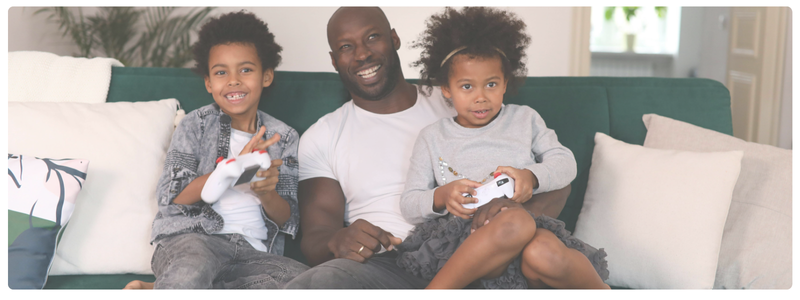


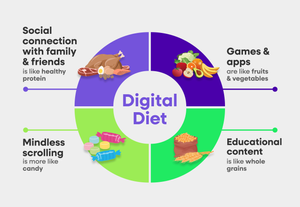
 Copy Link
Copy Link
 Share
to X
Share
to X
 Share
to Facebook
Share
to Facebook
 Share
to LinkedIn
Share
to LinkedIn
 Share
on Email
Share
on Email

